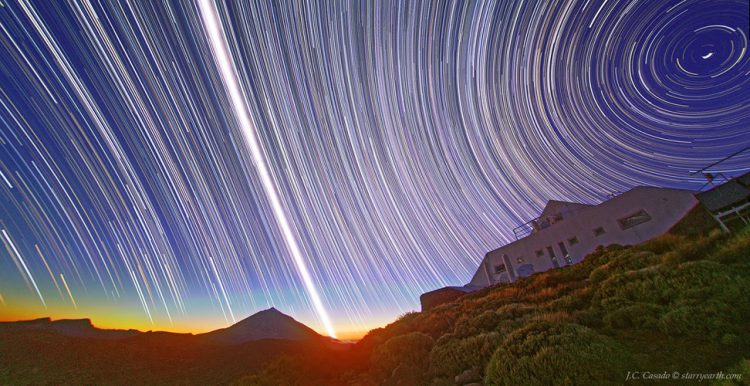Equinox Trails
Description
The trails of the sun and stars are captured on one image taken from Teide Observatory (IAC) in the Canary Islands. As explained by the photographer “this image was made during the spring equinox of 2010. A full format DSLR with a fisheye lens were placed in a fixed position toward the west. First I made exposures for the Sun every 30 seconds with a solar filter placed on the lens during about 6 hours (the bold rectilinear trail the sun). After sunset, exposures were made continuously (30 seconds each) to capture the motion of stars for about 5 hours. Then all images (almost 16 GB of data) were combined with computer. The distortion of the fisheye lens was also fixed. The resulting image captures the moment the sun passes the celestial equator (the bright trail of the sun also marks the equator). Startrails on each celestial hemisphere (North and South) are curved in the opposite direction. To the right is the North Star, the Polaris. The building on the right is the solar laboratory “Pyramid Van der Raay” (known as Pyramid) which studies the sun’s interior by Helioseismology. In the background is the Teide volcano (3710 m) and right on the horizon is La Palma island.

comments (4)
Unbelievably beautiful…
July 30, 2010 at 11:12 pmThanks for sharing.
what an amazing picture thanks for sharing
August 14, 2010 at 10:29 pmWhy does the right side have more intense star trails than the left??
June 10, 2011 at 10:20 amI will use this image in my physics course to show the star motion in relation to earth. This is a simple example the earth is not a inertial referential. Thanks !
September 10, 2011 at 10:29 am